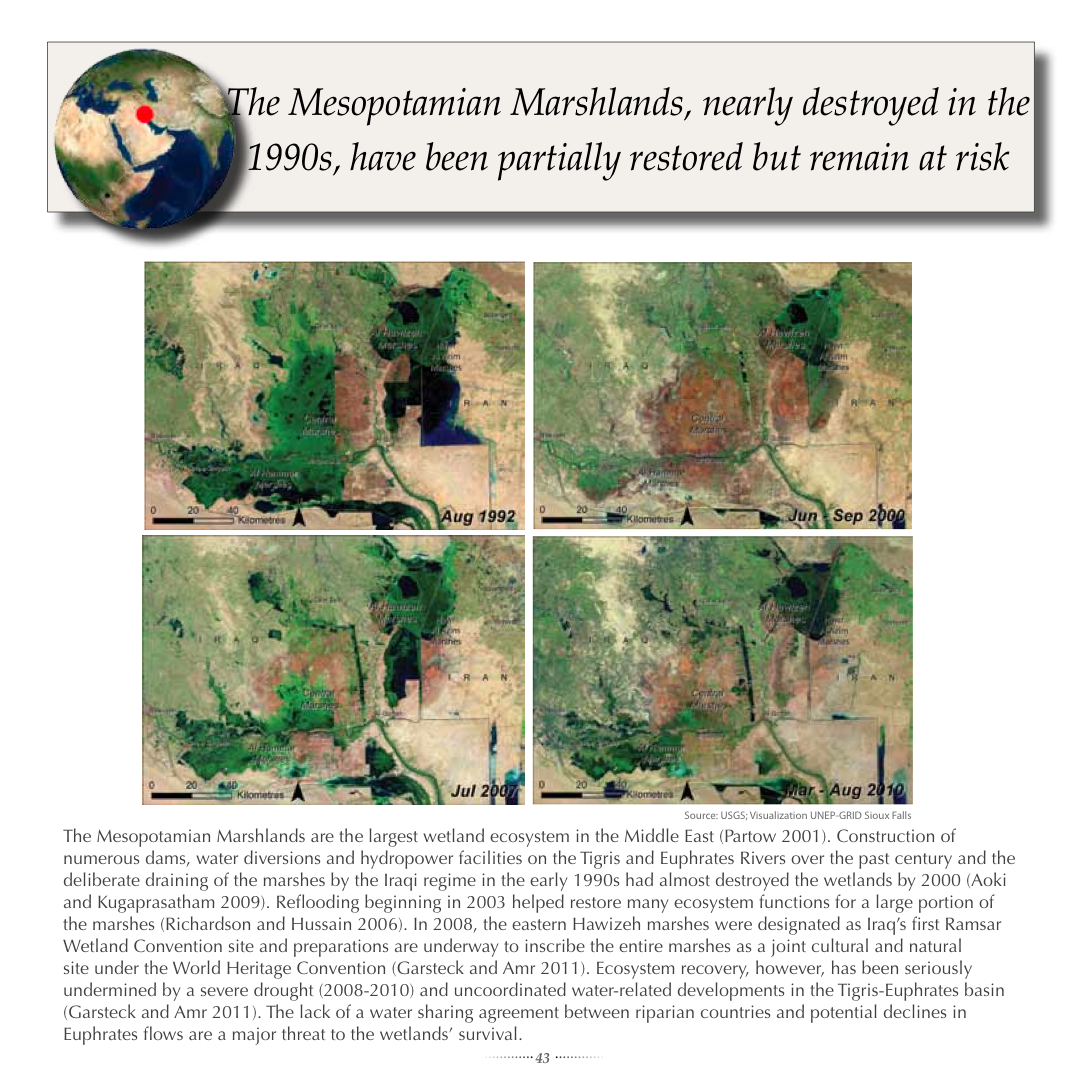resource
Nov. 1 2011
Resource
Mesopotamian Marshlands (Keeping Track)
Description
The Mesopotamian Marshlands, nearly destroyed in the 1990s, have been partially restored but remain at riskThe Mesopotamian Marshlands are the largest wetland ecosystem in the Middle East (Partow 2001). Construction of numerous dams, water diversions and hydropower facilities on the Tigris and Euphrates Rivers over the past century and the deliberate draining of the marshes by the Iraqi regime in the early 1990s had almost destroyed the wetlands by 2000 (Aoki and Kugaprasatham 2009). Reflooding beginning in 2003 helped restore many ecosystem functions for a large portion of the marshes (Richardson and Hussain 2006). In 2008, the eastern Hawizeh marshes were designated as Iraq’s first Ramsar Wetland Convention site and preparations are underway to inscribe the entire marshes as a joint cultural and natural site under the World Heritage Convention (Garsteck and Amr 2011). Ecosystem recovery, however, has been seriously undermined by a severe drought (2008-2010) and uncoordinated water-related developments in the Tigris-Euphrates basin (Garsteck and Amr 2011). The lack of a water sharing agreement between riparian countries and potential declines in Euphrates flows are a major threat to the wetlands’ survival.
This graphic is part of the publication Keeping Track of Our Changing Environment.
